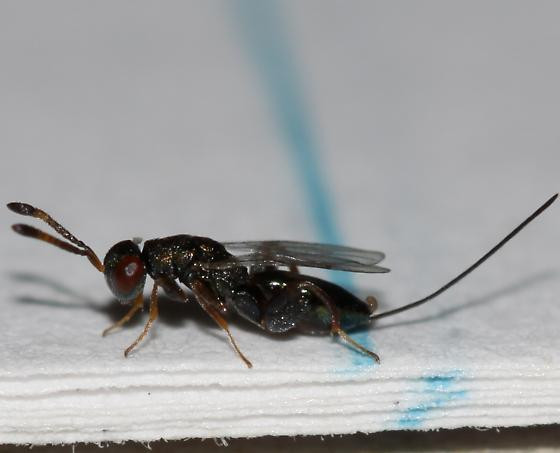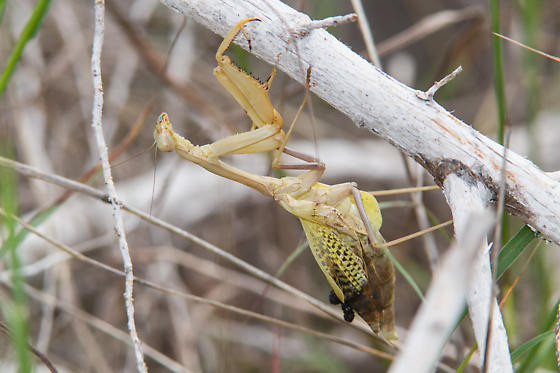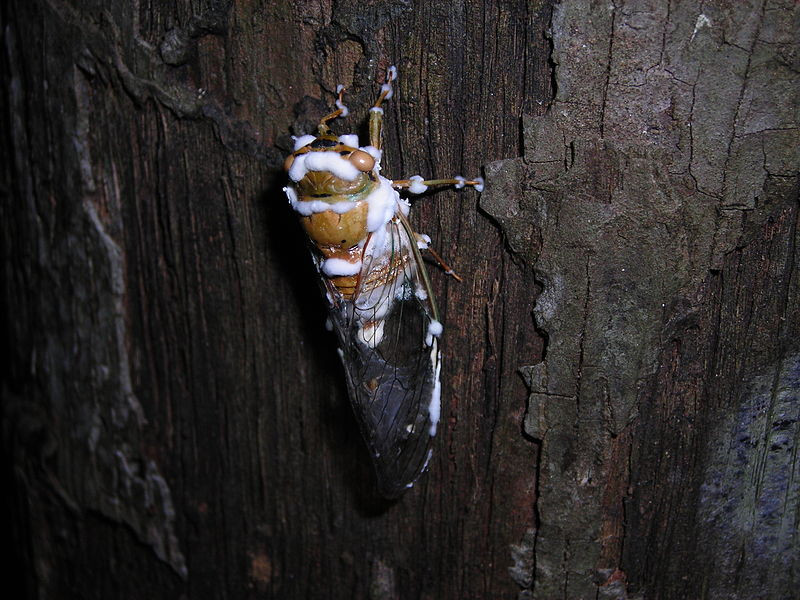Praying mantises, often celebrated and admired insects, frequently capture public attention. Among the myriad questions posed about these fascinating creatures, the topic of parasites emerges as a compelling area of interest. It’s a natural curiosity to wonder, do these formidable predators themselves fall prey to parasitic organisms?
For those captivated by the intricacies of parasitism, the question of mantis parasites offers a unique intersection of interest. Mantises, standing as apex predators within the insect world, present a compelling case study in ecological dynamics. Their position at the top of the food chain might suggest invulnerability, yet nature often reveals more nuanced relationships. Indeed, while adult mantises face few predation threats, primarily from vertebrates like bats and birds, their vulnerability shifts to microscopic adversaries: parasites. These smaller organisms, often overlooked, play a crucial role in regulating populations and shaping ecosystems, and mantises are no exception to their influence.
Mantises are host to a diverse array of parasites, showcasing the breadth of parasitic strategies in nature. These include wasps, flies, beetles, fungi, and nematomorph worms, each employing unique methods to exploit the mantis as a host. Intriguingly, the study of mantis parasites is an ongoing field of discovery, with many aspects still poorly understood. Recent findings continue to unveil new parasites and shed light on the complex interactions between these organisms and their mantis hosts. This lack of comprehensive knowledge extends to questions of host specificity, highlighting the need for further research in this area.
Therefore, let’s delve into the fascinating world of mantis parasites, exploring the various types that target these iconic insects.
Wasps: Parasitoids of Mantis Eggs and Adults
Parasitoid wasps are a common threat to insects, with many species targeting larval stages. However, wasps also parasitize insect eggs, and mantis eggs are no exception. The wasps that specialize in mantis eggs exhibit remarkable adaptations and life cycles.
Mantidophaga: The Hitchhiking Wasp
 This is a Podagrion wasp, which is a beautiful emerald green with ruby red eyes. Picture credit: Edward Trammel, used under Creative Commons Liscense from Bugguide.net
This is a Podagrion wasp, which is a beautiful emerald green with ruby red eyes. Picture credit: Edward Trammel, used under Creative Commons Liscense from Bugguide.net
One particularly fascinating example is Mantidophaga, a Scelionid wasp. This tiny wasp is a parasitoid of mantis egg cases during its larval stage, a relatively conventional parasitic strategy. However, Mantidophaga exhibits an unusual behavior in its adult stage, becoming a parasite of the adult mantis itself. After emerging from a mantis egg case, the adult wasp seeks out a new host, not another egg case, but an adult mantis. Upon locating a mantis, the wasp lands on it and remarkably, tears off its own wings. This act signifies a permanent commitment to its host, as it will never leave. Whether the mantis is male or female is inconsequential, as the wasp can transfer hosts during mating. The wingless wasp then lives on the mantis, often in groups of up to five, feeding on the mantis’s hemolymph (insect blood) while awaiting the mantis to lay eggs, completing its life cycle.
Podagrion: The Gall-Mimicking Hunter
While Mantidophaga employs a hitchhiking strategy, not all mantis egg parasitoids exhibit this behavior. Podagrion, a Torymid wasp, is another example of a mantis egg parasitoid, but it relies on visual cues to locate its host. Torymid wasps are typically specialists of gall wasps, preying on the inhabitants of plant galls. Mantis egg cases bear a resemblance to plant galls, suggesting an evolutionary pathway for Podagrion to specialize on mantis eggs. This visual similarity likely attracts Podagrion wasps to mantis egg cases.
Torymid wasps, including Podagrion, are often considered among the most visually striking insects. Their emerald green bodies and ruby-red eyes create a jewel-like appearance, adding to their allure for insect enthusiasts. The emergence of Podagrion wasps from egg cases is a captivating event, beautifully captured in videos by nature enthusiasts like Nature1upclose. These videos showcase the intricate life cycle of these parasitoids. Furthermore, renowned natural historian David Attenborough has featured related Torymid wasps in his documentaries, highlighting their parasitism of insects within plant galls.
Flies: Tachinid Parasitoids of Adult Mantises
Flies from at least two families, Sarcophagidae and Tachinidae, are known to parasitize mantises. Sarcophagid flies are often associated with decaying flesh, but many species are insect parasitoids, particularly of grasshoppers. However, information on Sarcophagid parasites of mantises remains limited.
In contrast, Tachinid flies, particularly Masiphya, are better-documented mantis parasitoids. Masiphya specifically targets the Carolina mantis. Remarkably, this fly, no larger than a common housefly, can bring down a significantly larger and more powerful praying mantis.
 This is very likely a parasitized mantis. The discoloration and discharge from the top of the abdomen is typical in insects after the emergence of Tachinid larvae. She is very lucky, having reached adulthood. This happens in very lucky individuals, but is very rare. Photo credit: Greg Lasley. Photo used under a Creative Commons Liscense from www.bugguide.net.
This is very likely a parasitized mantis. The discoloration and discharge from the top of the abdomen is typical in insects after the emergence of Tachinid larvae. She is very lucky, having reached adulthood. This happens in very lucky individuals, but is very rare. Photo credit: Greg Lasley. Photo used under a Creative Commons Liscense from www.bugguide.net.
The life cycle of Masiphya involves the female fly injecting an egg into the mantis, typically near its raptorial forelegs. The larva then burrows through the mantis’s body, eventually settling in the abdomen. There, it constructs a respiratory funnel to breathe while feeding on the mantis’s hemolymph. After consuming enough resources, the maggot emerges from the mantis to pupate in the soil.
Parasitized mantises often exhibit visible signs of infection. Late in the season, between August and October, adult mantises are commonly observed. However, parasitized individuals may be noticeably smaller, wingless, and only about half the size of healthy adults. These smaller mantises are those that have been parasitized by Masiphya and have not developed fully due to the fly larva’s feeding. While rare, some mantises can survive parasitism and even reach adulthood, as evidenced by documented cases and photographs.
Nematomorphs: Mind-Controlling Worms
Nematomorphs are a group of parasites that frequently capture public attention, often due to dramatic videos circulating online. These videos typically depict large worms emerging from mantises, often eliciting reactions of horror. However, beyond the sensationalism, nematomorphs are fascinating parasites with complex life cycles.
 Close-up of a Nematomorph taken near Quito, Ecuador by Joe Ballenger
Close-up of a Nematomorph taken near Quito, Ecuador by Joe Ballenger
Nematomorphs are distinct from nematodes and earthworms. Their life cycle involves at least two hosts and requires transitions between terrestrial and aquatic environments. The videos commonly seen online show the later stage of the nematomorph life cycle, where the adult parasite manipulates its mantis host to drown itself in water. This drowning is essential for the nematomorph’s reproduction, as the adult stage is free-living and aquatic. Adult nematomorphs lack digestive, circulatory, and respiratory systems, essentially functioning as swimming reproductive machines. Females can lay over a million eggs in their lifetime.
The nematomorph life cycle begins with eggs hatching in water, releasing short-lived larvae. These larvae must infect an aquatic insect, such as a mosquito larva. The nematomorph larva then remains dormant within the aquatic insect as it develops into its adult terrestrial form. For the nematomorph to mature, this aquatic insect must be eaten by a terrestrial insect, such as a mantis. Once ingested by the mantis, the nematomorph migrates to the abdomen and absorbs nutrients, growing until it is ready to emerge and reproduce, triggering the host-drowning behavior.
 Joe contemplates a Nematomorph he captured during a trip to Ecuador. The animal was released unharmed back into a nearby stream.
Joe contemplates a Nematomorph he captured during a trip to Ecuador. The animal was released unharmed back into a nearby stream.
In summary, nematomorphs exhibit an extraordinary parasitic strategy, requiring transmission through two hosts and two distinct environments. They must survive in both aquatic and terrestrial insects, navigate two different host immune systems, and ultimately manipulate their mantis host’s behavior to complete their life cycle.
Fungus: Entomopathogenic Fungi like Beauveria
Parasitic fungi, particularly those exhibiting mind control, have gained significant public interest, exemplified by the Cordyceps genus popularized by David Attenborough. The concept of fungal mind control and bizarre fruiting bodies is undeniably captivating.
 Cicada infected with Beauveria fungus in Bolivia. Image credit:
Cicada infected with Beauveria fungus in Bolivia. Image credit:
However, most parasitic fungi are not as elaborate as Cordyceps. Beauveria is a common fungal pathogen of mantises. Beauveria appears to be an asexually reproducing strain related to Cordyceps. Beauveria is considered a model entomopathogenic fungus due to its ease of cultivation, broad host range among insects, and potential for use as a biological insecticide.
Beauveria kills its insect host and then utilizes the body as a substrate for fungal growth. Unlike Cordyceps, Beauveria does not induce mind control in its hosts. Infected insects typically die while grasping onto their substrate. Instead of developing prominent fruiting bodies, Beauveria-infected insects become covered in a fuzzy white fungal growth.
In Conclusion: Mantises and Their Parasites
Mantises are indeed hosts to a wide variety of parasites, each with unique and often bizarre life cycles. Many of these parasites are visually striking or possess incredibly complex life strategies. Beyond parasitoids, some insects, particularly certain beetles and flies, also utilize mantis egg cases as a food resource. The world of mantis parasites reveals the intricate and often surprising relationships within ecosystems, highlighting that even apex predators are subject to parasitic interactions.
Sources cited:
- Clausen, C. 1940. Entomophagous Insects. McGraw-Hill. York, PA. 688 pp.
- Luan F, Zhang S, Cai Y, Sun Z, Wang B, Huang B, Li Z. 2011. Identification of the molecular origin and and development of a panzootic caused by Beauveria bassiana in praying mantis populations in eastern China. Journal of Invertebrate Pathology 108(2): 98-105
- Pechenik, J. 2010. Biology of the Invertebrates, 6th edition. McGraw-Hill. Boston, MA. p. 452-457.
- Young OP. 2009. Parasitism of Stagomantis carolina by Masiphya confusa. Annals of the Entomological Society of America 102(5): 842-846